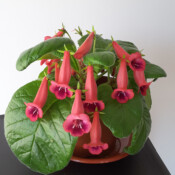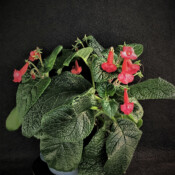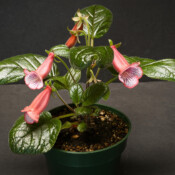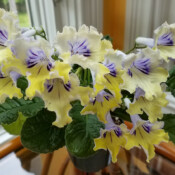Exhibited at the 2020 virtual show of the Gesneriad Society.
Advanced Search
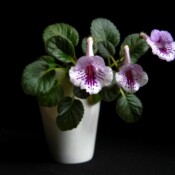
Sinningia ‘Sim Sim Infinity’
Exhibited at the 2020 virtual show of the Gesneriad Society. This new hybrid is both very compact and produces spectacular flowers. Another close view of flowers can be seen here.
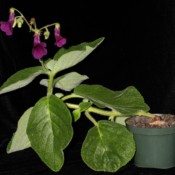
Sinningia bragae
Exhibited at the 2017 convention of the Gesneriad Society. This plant was known as Sinningia sp. “Ibitioca” (from its collection location) for many years, until it was officially published. It is closely related to Sinningia aghensis, with which it
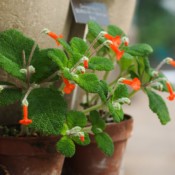
Sinningia bullata
This species is remarkable for the thick white wool on the back of new leaves and on the tips of new shoots, as well as for its “bullate” (bumpy or pebbly) leaves and its beautifully contrasting red flowers. It has begun to be widely used in
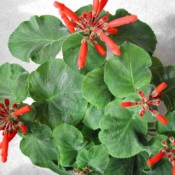
Sinningia cardinalis
S. cardinalis is a popular species, which produces brilliant red hooded flowers against attractive downy bright-green leaves. Like all Sinningias, it grows from tubers and has a period of dormancy after growth and flowering. The specimen above is a compact form of the species.
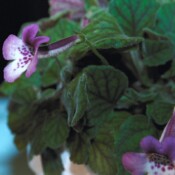
Sinningia concinna
Sinningia concinna is one of the “micro” species of Sinningia. A plant may have one or more crowns, but each crown is usually less that 5 cm [2 inches] in diameter. The species is prized for its beautifully spotted flowers and nicely

Sinningia defoliata
For the first year of its life, a seedling of this species has a normal-looking stem with opposite leaves. The next year, however, after its first dormancy, only a single leaf appears. As years go by, the plant will develop more leaves, all appearing directly from
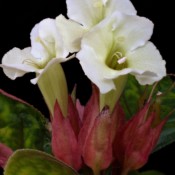
Sinningia helleri
Sinningia helleri is the “type species” for Sinningia, in that it was the first species described under that name, in 1825. It was grown and valued for many years as a fine decorative plant suitable for greenhouses and similar environments, but

Sinningia leucotricha
Sinningia leucotricha has had a confusing recent taxonomic history. Material in cultivation was known under this name for some time, before it was understood to be properly a different species, S. canescens. After some years under this name, the “true” S.

Sinningia macropoda
This impressive species can grow to a large size, with large leaves, many flowers and an enormous partly-exposed tuber. It can also be managed as a more modest and tidier plant, to good effect. Additional photos can be seen in a slideshow by clicking one of
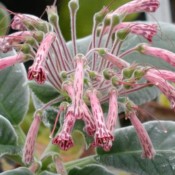
Sinningia piresiana
Sinningia piresiana produces a caudex-like tuber, and in general habit is similar to S. canescens or S. leucotricha, including somewhat silvery leaves. The flowers have some resemblance to those illustrated in an antique print of
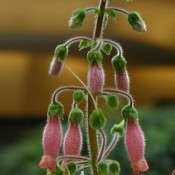
Sinningia sellovii
This is a somewhat variable species, with flowers ranging from red through pink to white. The reddish pink shown here is perhaps the most common. The flowers typically down from an upright or diagonal stem, an unusual habit for Sinningias. There are a number of photos
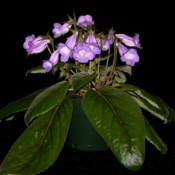
Sinningia speciosa ‘Buzios’
Exhibited at the 2014 convention of the Gesneriad Society. Additional photos can be seen in a slideshow by clicking one of the links below: A flower close-up showing shed pollen A plant exhibited at the 2020 virtual show of the Gesneriad Society
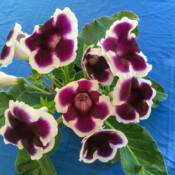
Sinningia speciosa ‘Kaiser Wilhelm’
Exhibited at the 2020 virtual show of the Gesneriad Society. S. speciosa ‘Kaiser Wilhelm’ is a very old hybrid, dating to the early 20th Century or earlier. It may not have been available as a clone for long, and is more likely now the
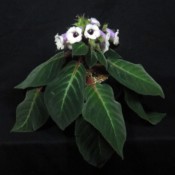
Sinningia speciosa ‘Pedra Lisa’
Exhibited at the 2013 convention of the Gesneriad Society. This form of the species has flowers similar to those of S. speciosa ‘Carangola’, but with nicely dark and patterned leaves. Additional photographs can be seen in a slide show by clicking
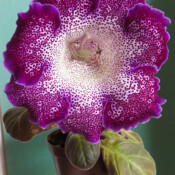
Sinningia speciosa ‘Peridots Darth Vader’
Exhibited at the 2020 virtual show of the Gesneriad Society. This is a difficult color to photograph accurately, and some photos, like the one here (also from the 2020 virtual show) have more red and less blue than is usually the case.
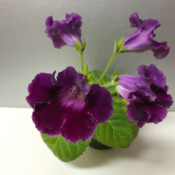
Sinningia speciosa ‘Rock Royalty’
Exhibited at the 2020 virtual show of the Gesneriad Society. S. speciosa ‘Rock Royalty’ is a hybrid by Jay Sespico.
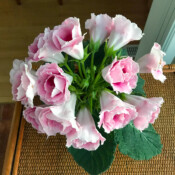
Sinningia speciosa unnamed Charles Lawn double pink hybrid
Exhibited at the 2020 virtual show of the Gesneriad Society. We have not been posting photos of unnamed hybrids lately, but this one is an exception. Not only is it an outstanding example of the late Charles Lawn’s hybridizing with S. speciosa, it
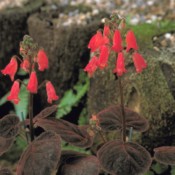
Smithiantha cinnabarina
This is a species that has been known horticulturally for close to 200 years. It is particularly notable for it’s plush reddish leaves, as well as for its colorful flowers. Additional photos may be seen in a slideshow by clicking one of the images below: A
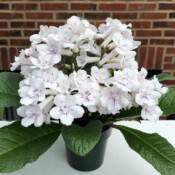
Streptocarpus ‘Bristol’s Lollipop’
Exhibited at the 2020 virtual show of the Gesneriad Society.

Streptocarpus ‘Brooklin’s Bubble Gum’
Exhibited in the 2020 virtual show of the Gesneriad Society.
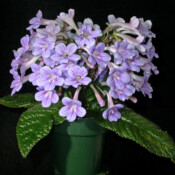
Streptocarpus ‘Dale’s Baby Bluebirds’
Exhibited at the 2020 virtual show of the Gesneriad Society.
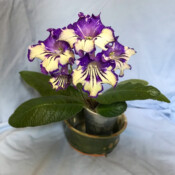
Streptocarpus ‘DS-Meteor Shower’
Exhibited at the 2020 virtual show of the Gesneriad Society.
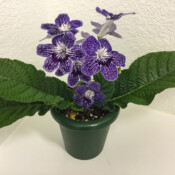
Streptocarpus ‘Franken Blackberry Lace’
Exhibited at the 2020 virtual show of the Gesneriad Society.
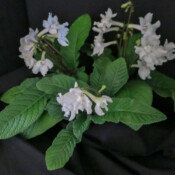
Streptocarpus ‘Heartland’s Snow Crystal’
Exhibited at the 2020 virtual show of the Gesneriad Society.
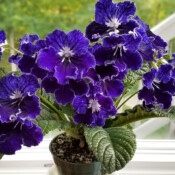
Streptocarpus ‘Midnight Thunder’
Exhibited at the 2020 virtual show of the Gesneriad Society. The appearance of the flowers, in particular the very dark blue/purple on the lobes, can vary somewhat in different lighting conditions. Additional photos can be seen in a slideshow by clicking the links below: Another
« Previous 1 … 3 4 5 6 Next »

